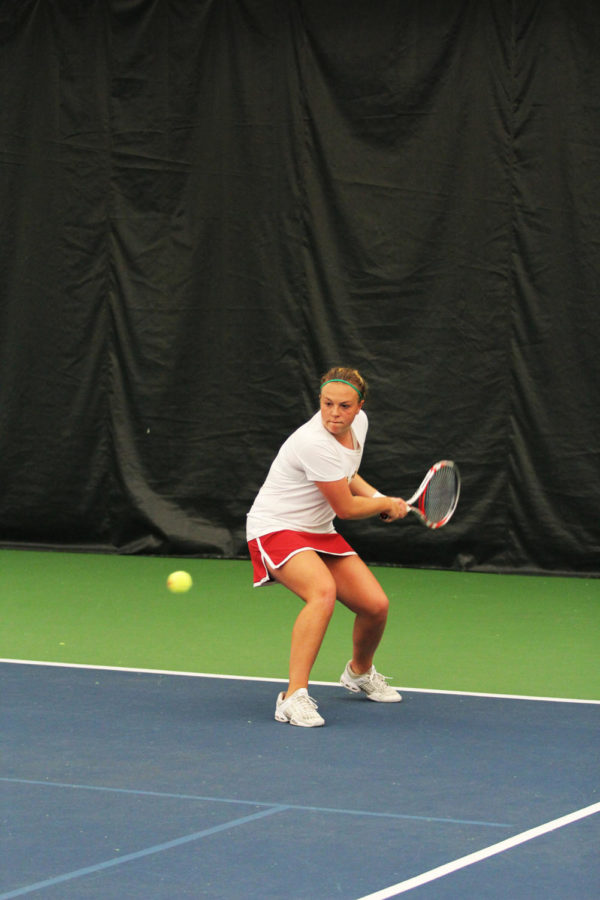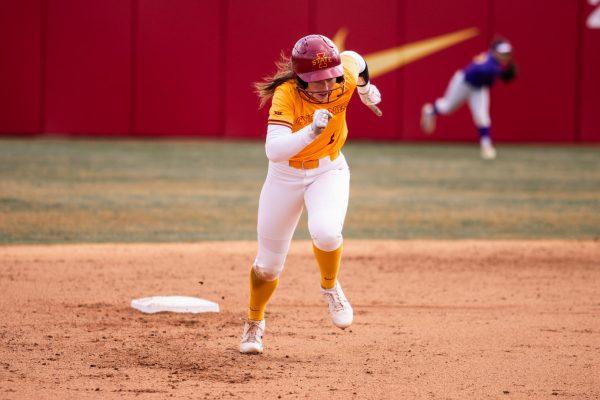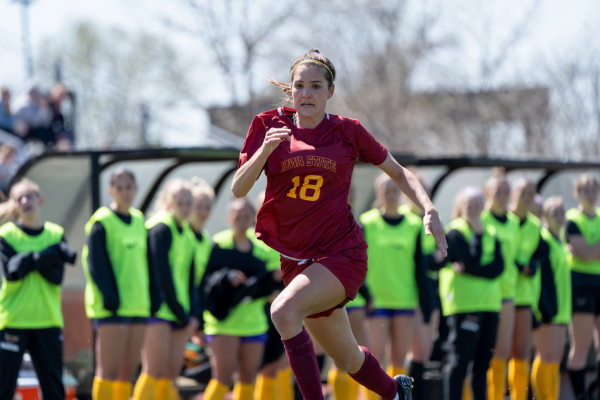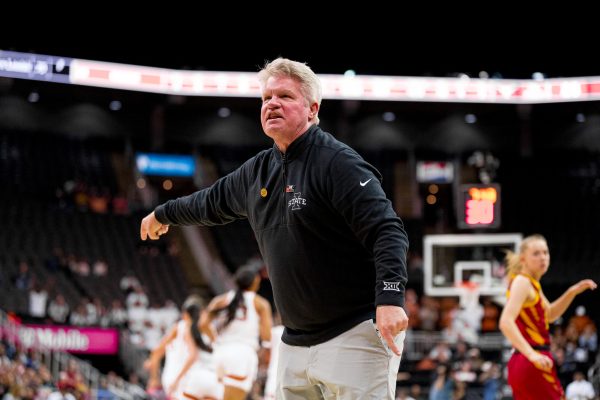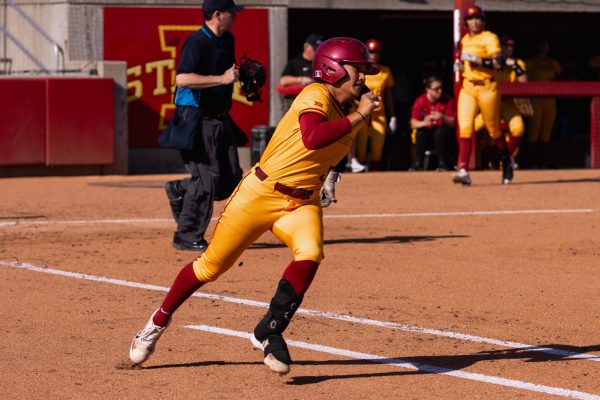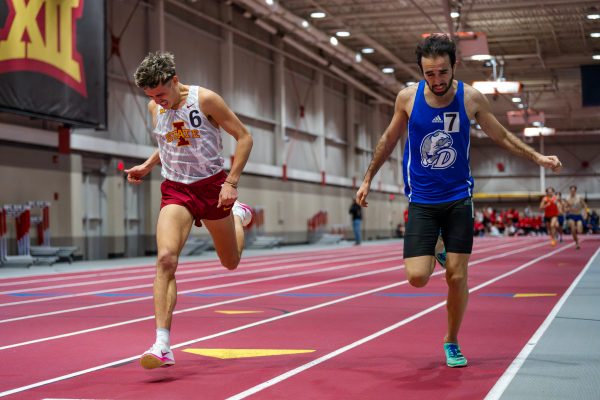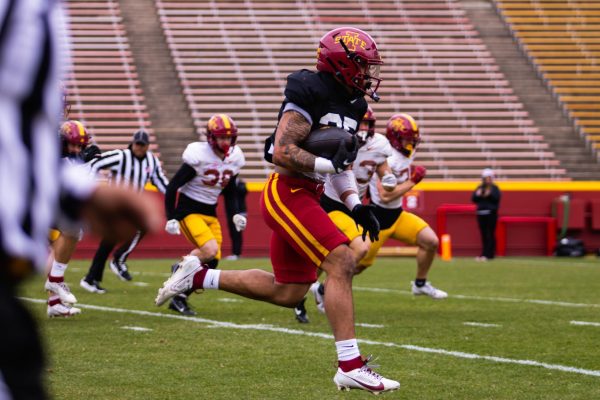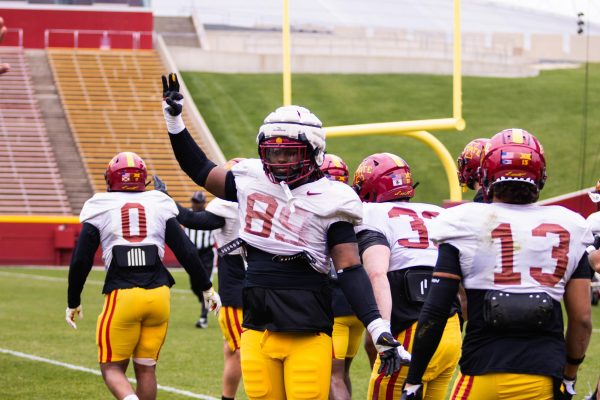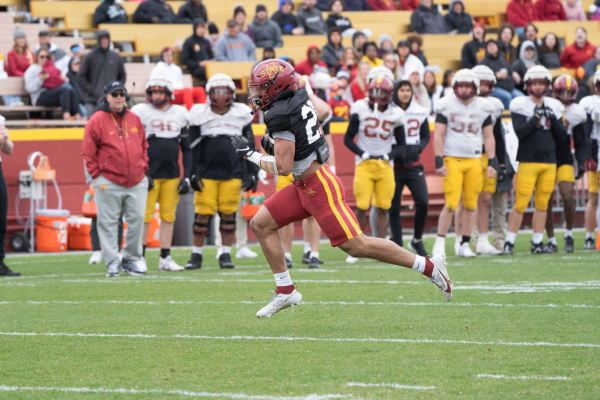ISU tennis treats fall season as ‘experimental time’
Photo: Kelby Wingert/Iowa State Daily
Sophomore Ksenia Pronina returns the ball against West Virginia on Sunday, April 14, 2013, at Ames Racquet and Fitness.
October 30, 2013
Fall is a time for everyone to get back in the swing of things.
The ISU women’s tennis team is no different. Its fall season is used as its primary time period to get ready for the spring season. It acts as a buffer between the team’s summer individual workouts and its intense competitive season in the spring.
“The fall tournaments are the time for the players to get ready for the spring season,” said ISU coach Armando Espinosa. “It is a bit of an experimental time.”
Although the fall is seen as an experimental time, the Cyclones do not try to change major parts of each individual player’s game, but use the time to change around doubles pairings.
“The time to really change something in someone’s game will be the summer, but the fall is used more for a conditioning phase to build a good base that we can maintain in the spring,” Espinosa said.
Junior Ksenia Pronina also believes the fall season acts as a main way to try new things while still working on improving past skills.
“The fall season definitely gives more room for us to work on certain things and try out new stuff,” Pronina said. “It allows us to try out new doubles combinations. Also we are able to get our rhythm back and be well prepared for the spring.”
Choosing the best doubles partners is not an easy task.
“Doubles pairings do depend a lot on personalities, but there is also a bit based on the way each individual plays,” Espinosa said. “For example, you can pair up a righty and a lefty so that the other team has a difficult time adapting to the spin of the ball.”
Even though a main focus in the fall is finding the right doubles pairings, another major part for Iowa State is focusing on individual performances.
“Besides doubles, the fall focuses more on individual performances,” Pronina said. “But things like supporting teammates and cheering already start in the fall and carry over to the spring.”
Making sure each player sees enough competition in order to be prepared for what they will see in the spring is important to handle in the fall as well.
“You try to give each player a chance to play in different places and face different competition in order to give them the same opportunities to face opponents that we will be facing in the spring,” Espinosa said.
Even though the fall is more individually focused than the spring, Pronina feels the squad does work on team building as well. With the incoming freshmen, they make sure to bond and get to know each other in the fall before starting the spring season.
“It is important that we all get to know each other, in order to be able to support each other on the court,” Pronina said. “We went out to dinner, or just hung out at one of our apartments and just talked about other stuff than tennis.”
Now that the fall season is closing, the team will move into its winter workouts. The winter consists of a less rigorous practice schedule because per NCAA rules, players can only practice two hours per week and condition six hours per week.
This makes practicing as a team and staying on track more difficult, which means that a lot of staying in shape and working on the new skills rests on the players’ own discipline.
“From November until the first day of classes in the spring, a lot rides on the athletes to hit [tennis balls] on their own,” Espinosa said.

